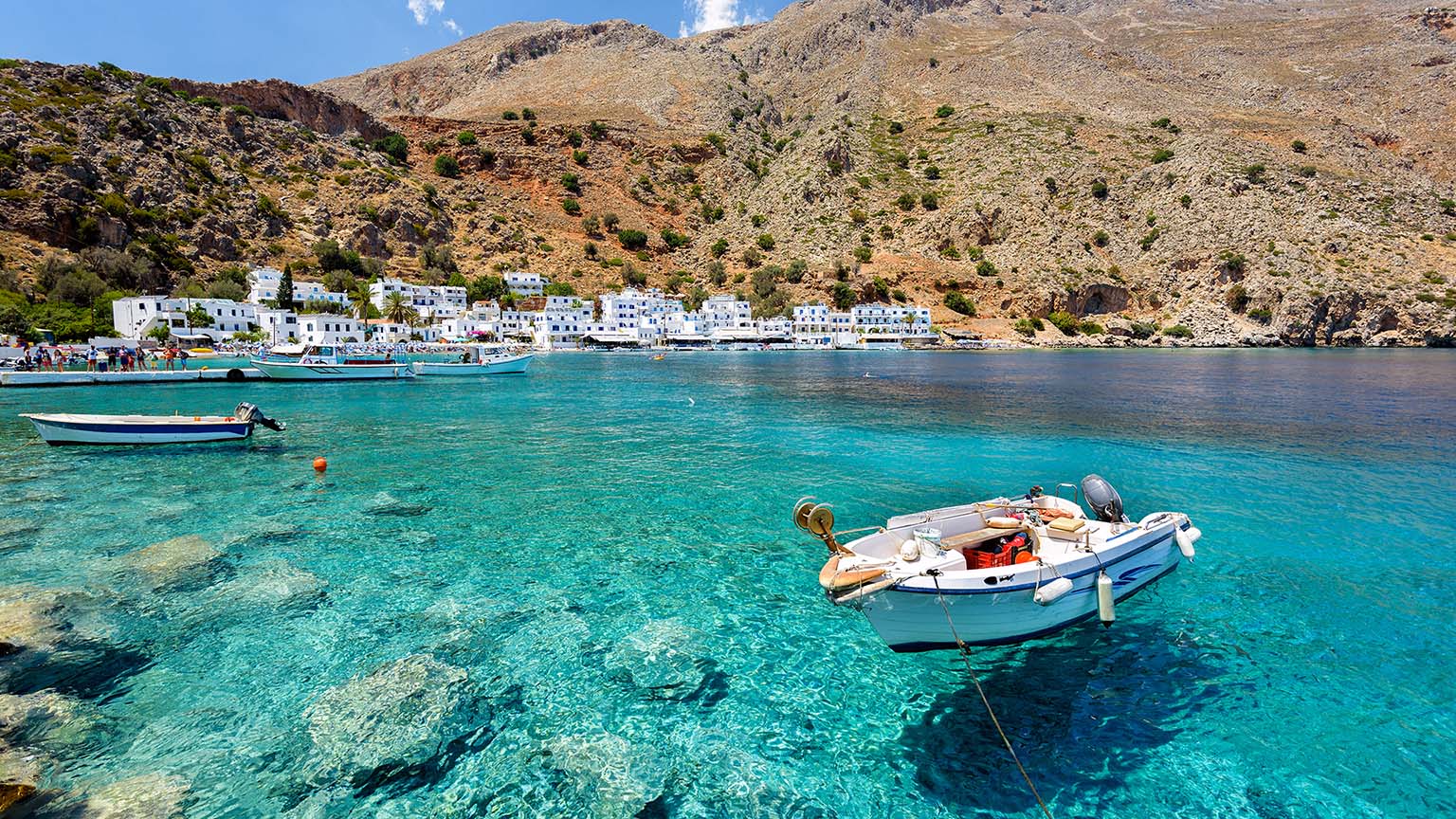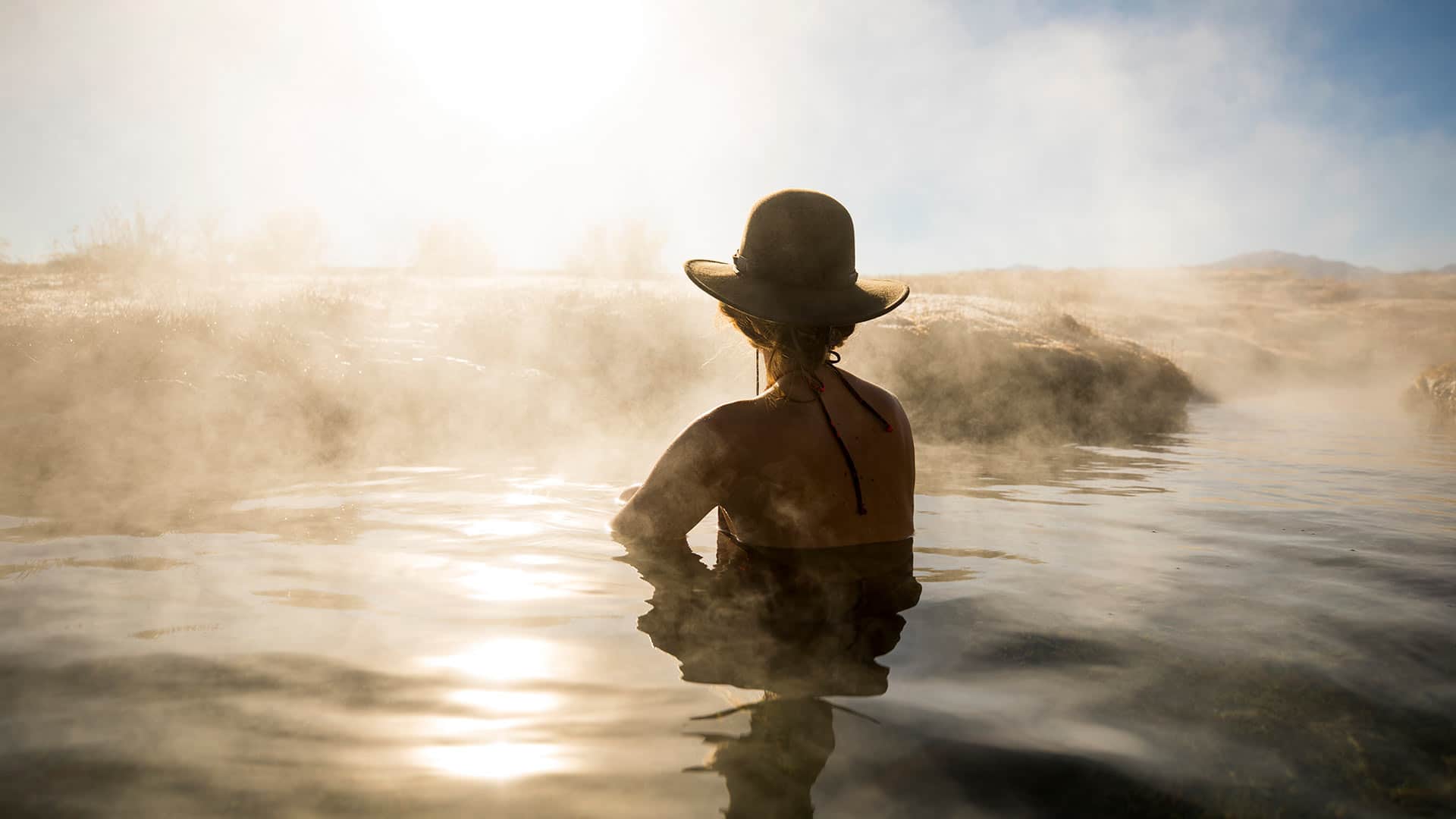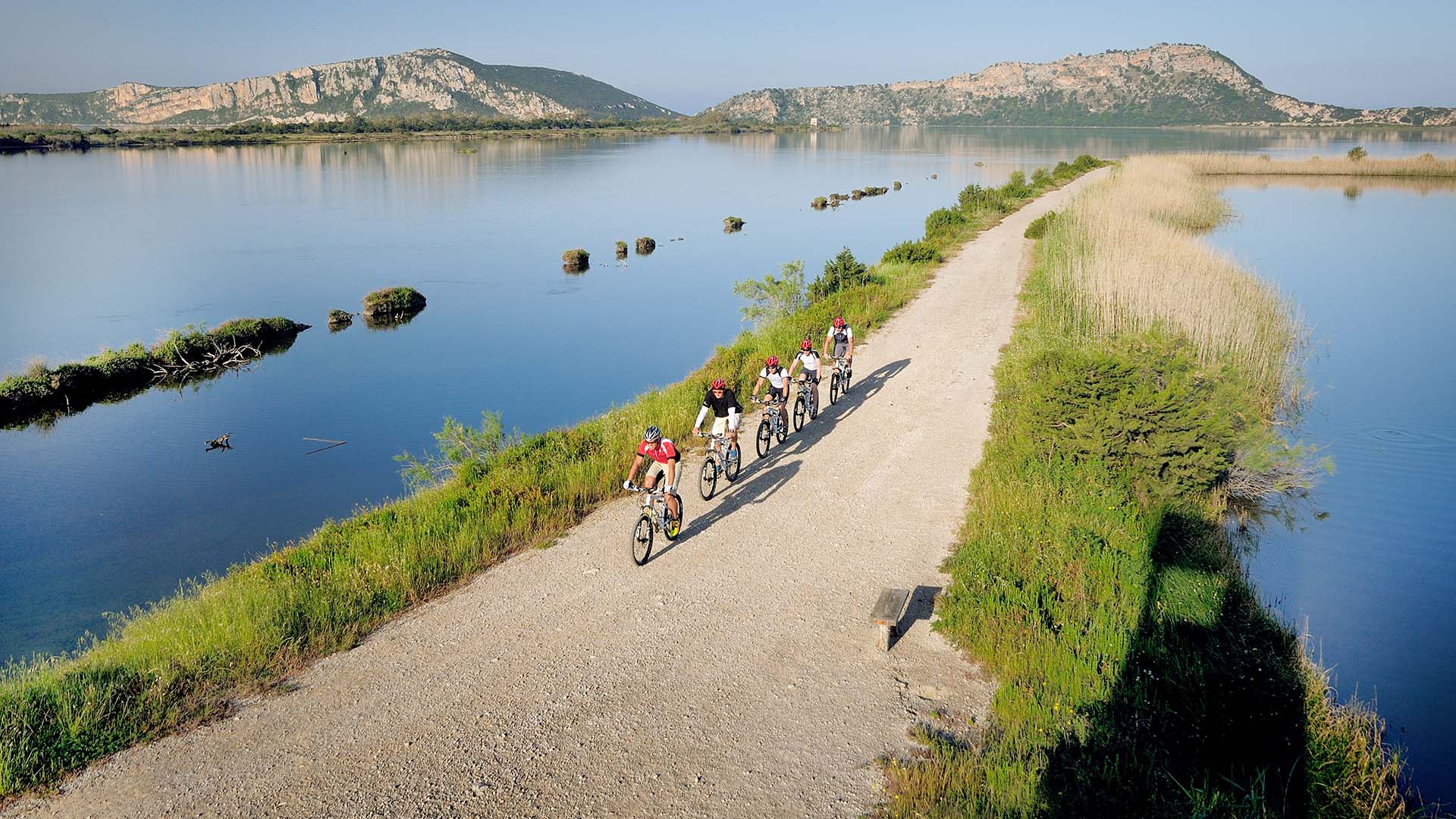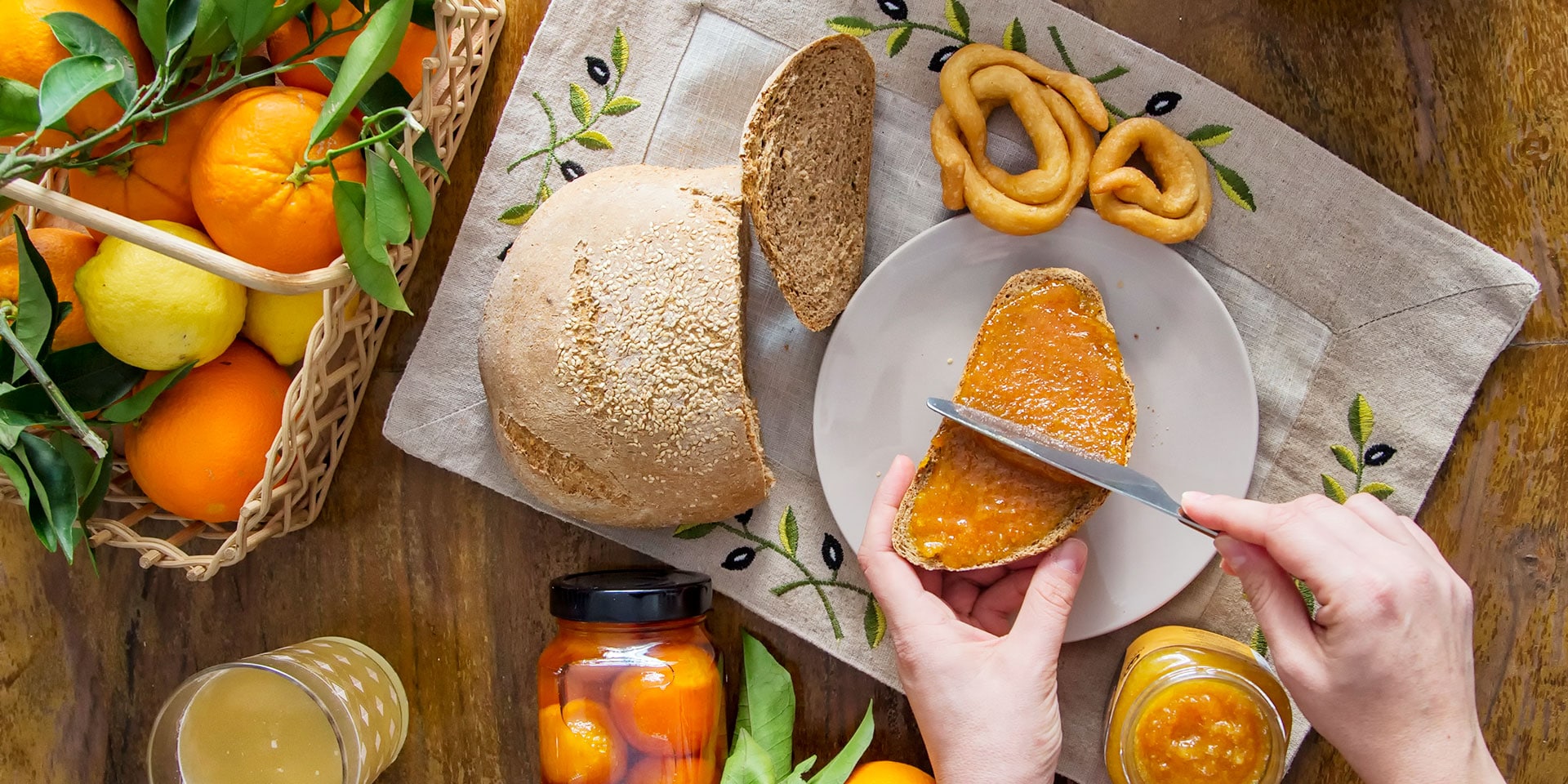
There’s ample reasons why the Costa Navarino is known as “the land of good fruit.” (Photo: Courtesy of The Romanos, a Luxury Collection Resort)
Eat + DrinkThe Good Life in the Land of Good Fruit: How to Eat Richly in Costa Navarino, Greece
By David FarleyOn a relatively untrodden coastline on the southwestern part of Greece’s Peloponnese Peninsula there exists a Garden of Eden of good eating, a paradise of appetizing edibles. And few people outside of the region are aware of its bounty.
Welcome to the Costa Navarino, where lush mountains meet the azure Ionian Sea and where juicy Kalamata olives grow next to plump grapes, juicy pomegranates and oversized figs.
While the rest of the world is playing catch up, discovering their old ingredients and recipes that disappeared in the last century, the sun-bleached denizens of this coastal region haven’t changed much in the centuries past, still making food and traditional recipes in old-school ways — phrases like “farm-to-table” and “snout-to-tail” never came into fashion because this style of eating never went away.
“We say that it’s a ‘blessed place,’” said Executive Chef Angelos Kallinteris of The Romanos, a Luxury Collection Resort, one of the few luxury properties to have set up shop along the pristine coast here. “Because of Messinia’s great food reputation, I’ve wanted to live and cook here for as long as I’ve been a chef. And then The Romanos opened, and I made it my goal to lead the kitchen there.”
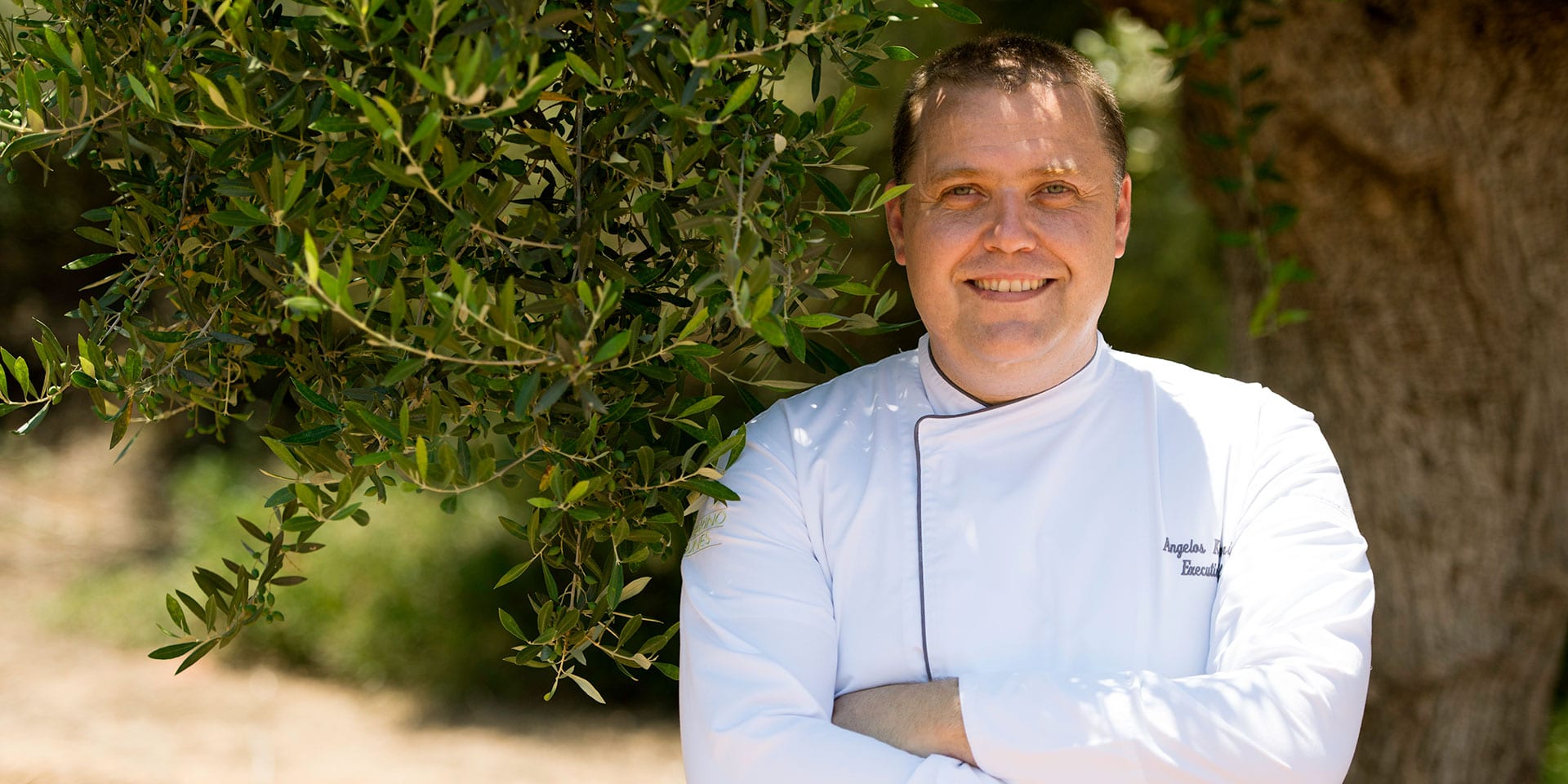
Its bounty of goodness has not really been a secret. After all, fifth-century B.C. playwright Euripides weighed in, calling the Costa Navarino “the land of good fruit.” That was two and a half millennia ago, and since then, after being occupied by Romans and Ottomans and Greeks again, one thing has been consistent: The fruits of the earth have always been superlative here.
But what’s the secret to Navarino’s deliciousness? “The climate and the landscape,” said Chef Kallinteris. “You don’t find places that are so rich in terms of surroundings. There is nowhere else like this in Greece. It’s still pure. We like to say here that if you accidentally drop a seed on the ground, it will flourish. And it’s true!”
And he need not go too far to find flourishing ingredients. The resort has its own garden where chefs can step out of the kitchen and pluck potently flavorful seasonal vegetables to toss into everything from salads to sauté pans. Farm to table? Sure, but here it’s more like garden plot to plate.
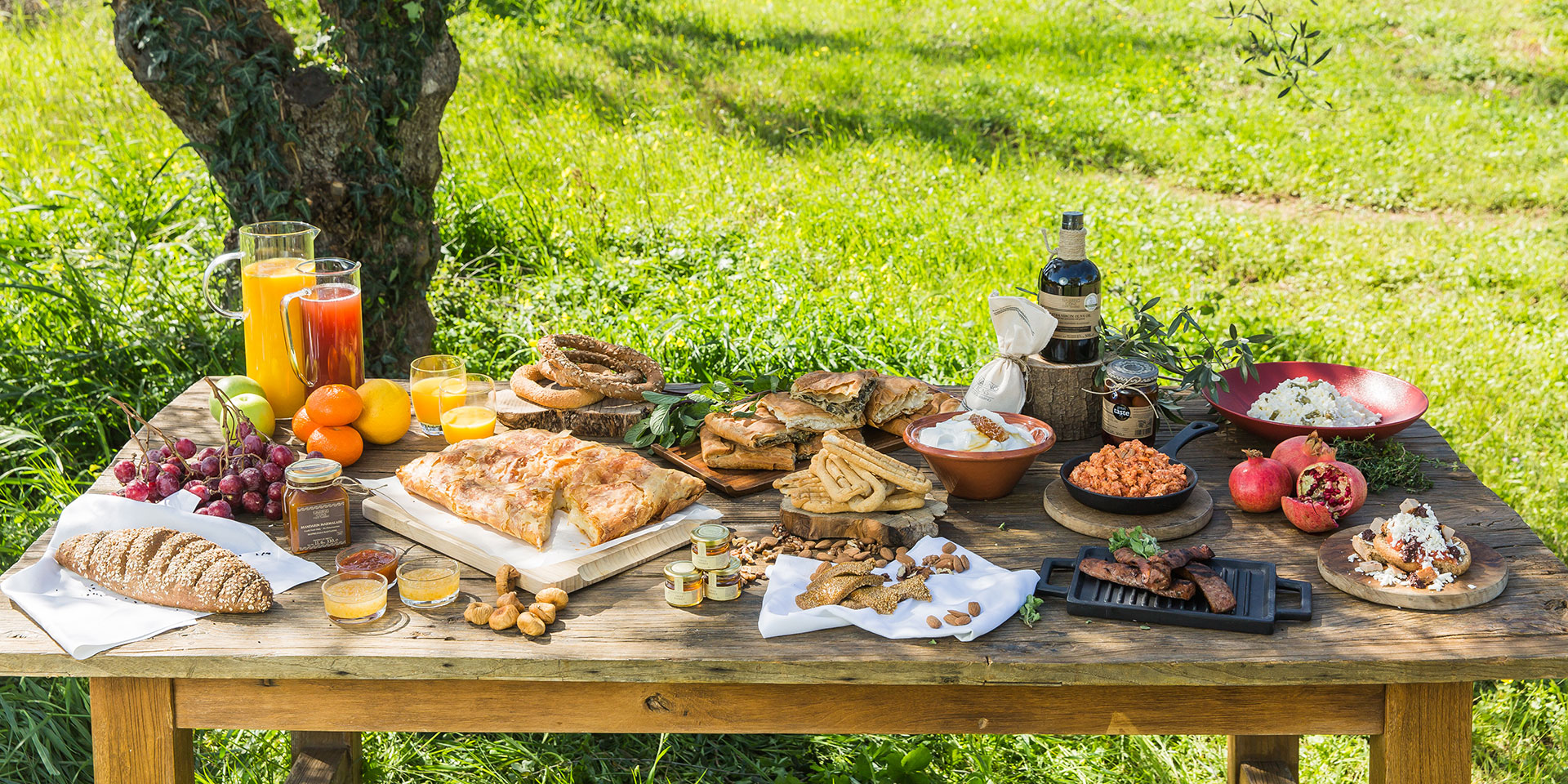
Dozens of ingredients — everything from potatoes, onions, cucumbers and an array of herbs to zucchini, leeks, pumpkin and corn — are all grown on property, supplying The Romanos’ restaurants with about 60 percent of their ingredients.
“As soon as the harvesting begins, we collect the best of the ingredients and use [them] in various dishes in the plates,” said Chef Kallinteris. “We actually design the menus according to what we grow. We pick it when it’s in season, when the vegetables are at their best, and then we use them in the restaurants.”
Some examples guests’ taste buds might meet include tomatoes for all the Greek salads around the resort, as well as for tomato sauce. Eggplants for moussaka. Zucchini for zucchini fritters.
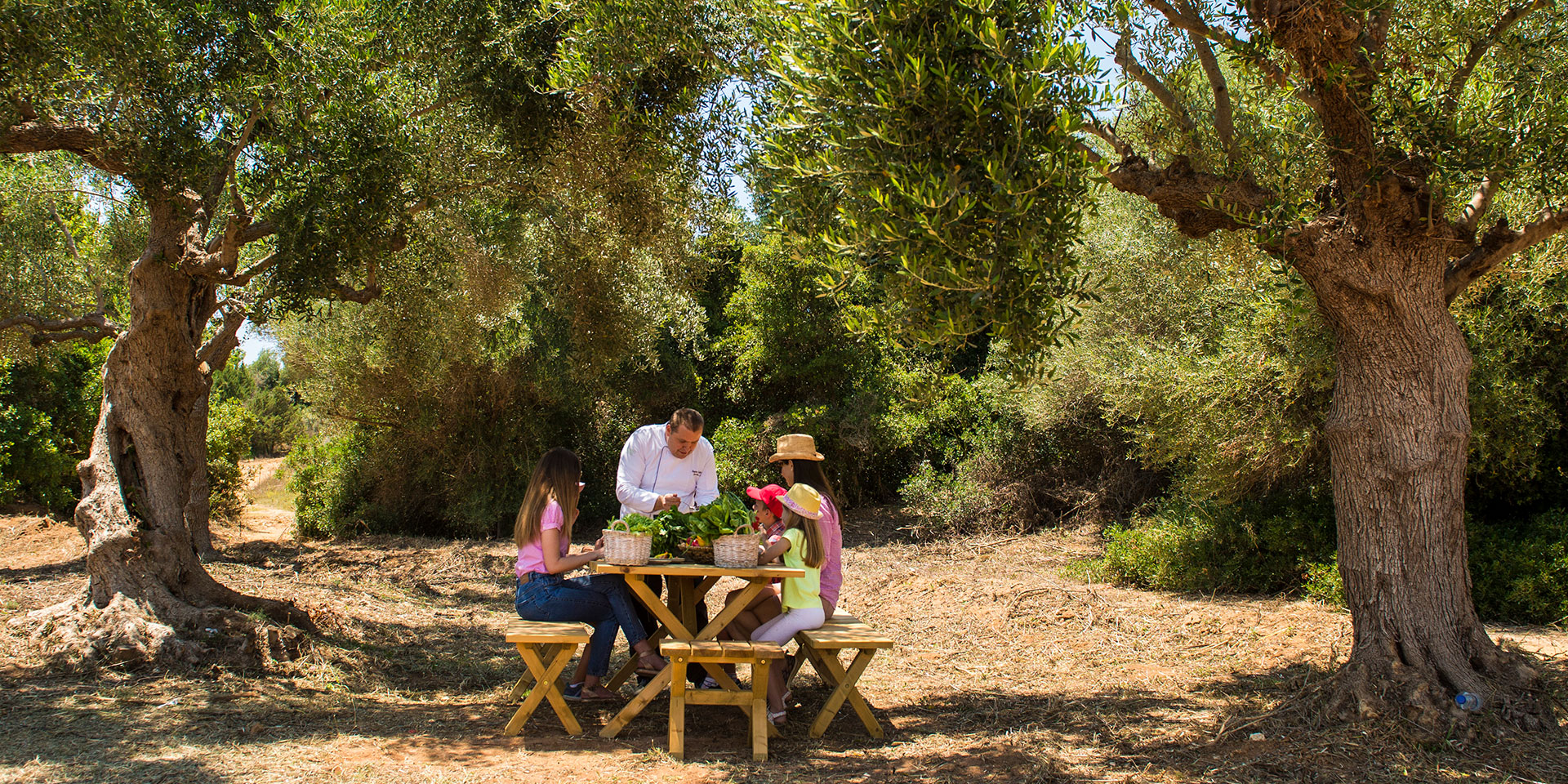
Chef Kallinteris may point to an embarrassment of edible riches that he has at his disposal, but when he needs ingredients beyond the on-property garden, he has a secret weapon: George Foteinakis, who acts as a liaison between farmers and chefs in the region and knows the landscape as if it were his own backyard.
“We have mountains that have a different climate from the sea — and they’re only 10 or 15 miles from each other,” said Foteinakis, whose job it is to meet with farmers as well as advise chefs like Kallinteris about traditional and endemic ingredients and dishes of the region.
Climate helps create much of the diversity in what grows in Messenia. But the real secret to the edible gems here, admits Foteinakis, is in the soil. When soil is naturally heavy, products take more time to ripen. When soil is light, it’s the opposite.
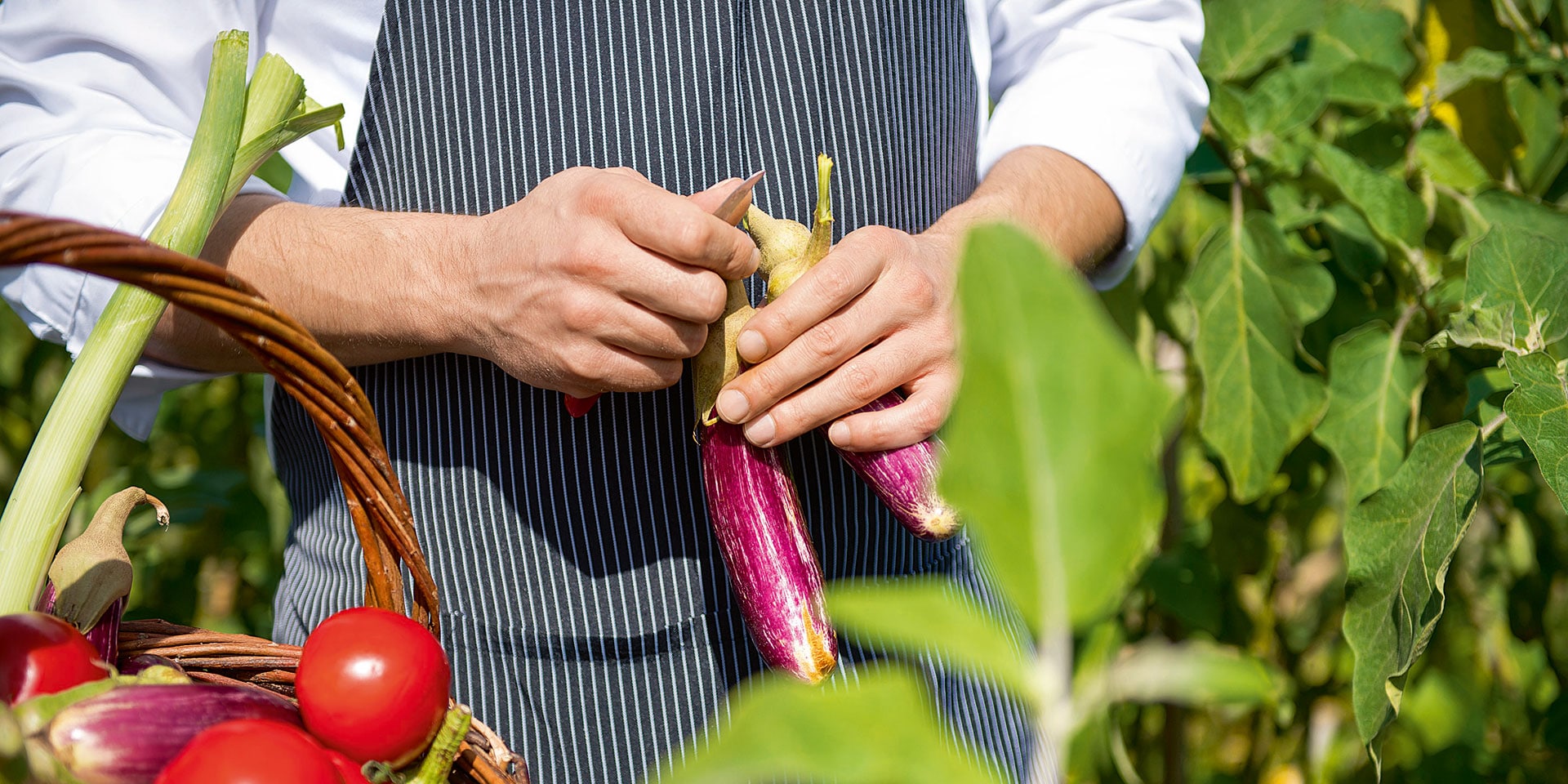
“Because our region is so sunny, the soil here is light; the products grow much quicker,” said Foteinakis. He added that it’s also possible to achieve this through scientific manipulation, but the cost is a decrease in flavor. “But because our agriculture grows naturally quickly, we get the benefit of full-on bold flavors.”
Some of those full-flavored ingredients that locals have been keeping close to their collective vests for a long time include the hondrokatsar tomato, a local variety that is plumper and juicer than what you’d find elsewhere; a delicious wild asparagus called omvries that grows on a bush; and a special breed of pig whose meat is called buzi that is particularly good for bacon.
The exemplary result is local dishes such as kagianas, which marries hondrokatsar tomatoes with buzi pork and farm-fresh eggs, served every day at The Romanos.
For those travelers fortunate enough to discover to the western Peloponnese Peninsula, their palate will be rewarded with the exploding flavors of the Costa Navarino in everything they eat.
As they say in Greece, “Kalí óreksi!” Bon appétit!





